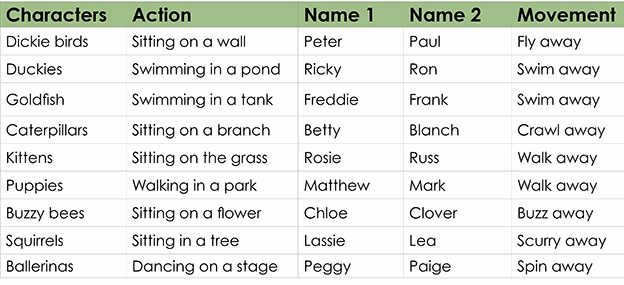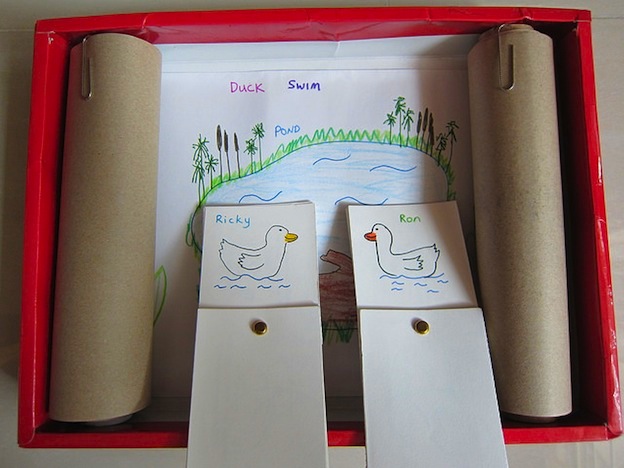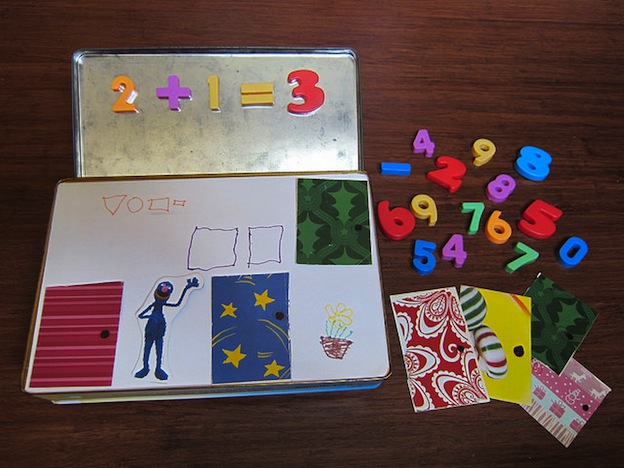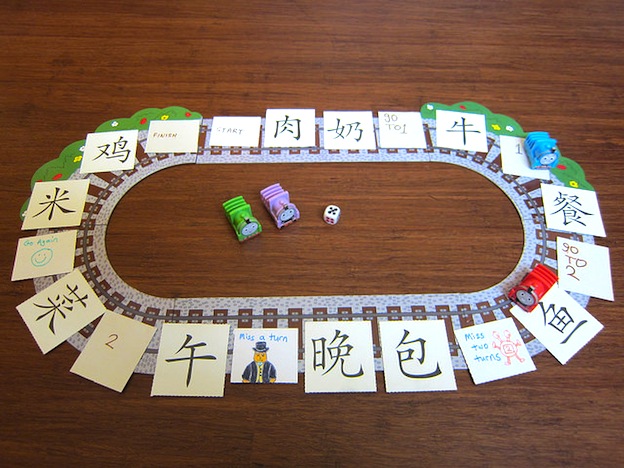SingaporeMotherhood | Family Fun
September 2015
4 Educational Games to Create with your Preschooler

The preschool years are a precious window of time during which a child can explore and learn about his world in a relatively carefree environment. Mindful of the academic expectations on my children upon entering Primary school, yet wanting my preschoolers to learn in a fun and stress-free manner, I crafted some educational toys and games with them based on whatever caught their fancy. My kids enjoyed these games, and best of all, learning took place without them realising it.
[banner][/banner]
The following are some ideas which you can make with your child and customise according to their interests. Although there are probably apps and online games available for these activities, encouraging your child to craft and play with physical toys helps to develop his motor skills in a way which electronic games cannot do.
1. Animated Rhymes
What it is:
This is a toy “television” whose background can be changed to show different scenes of the nursery rhyme, Two Little Dickie Birds. Two sets of cards illustrate the characters in this rhyme and the key words are written on the illustrations. Your child can turn the scroll to change the background, change the character cards to match the scene, and move the cards according to the movements mentioned in the rhyme.
The original rhyme has the following structure:
“Two little (Characters) (Action)
One named (Name 1), the other named (Name 2)
(Movement) (Name 1), (Movement) (Name 2),
Come back (Name 1), Come back (Name 2)”
The words in the table below are an example of how the original rhyme can be modified:

Why play with it:
Research has shown that nursery rhymes aid a child in language, cognitive, physical and social/emotional development. Through rhymes, young children learn sentence structures and new vocabulary. In this rhyme, children learn about animals, the way they move, and where they can be found. By replacing words in the rhyme, children are taught to recognise repeating patterns and how to manipulate these patterns to form a new story line.
How to make it:
To make a scroll, attach a long strip of paper (I used the paper from a roll of cotton wool) to two aluminium foil cores. Draw illustrations from the rhyme and get your child to colour them. Alternatively, print pictures from the Internet and paste them onto the scroll.
The scroll can then be inserted into a box following these instructions. (I have mounted the aluminium foil cores vertically instead of horizontally).
Ways to modify it:
You can illustrate any nursery rhyme which your child enjoys, get him to change the words, and find rhyming words to match. Finger puppets may be used in place of character cards, so that your child can act out the rhyme. Other activities and props for acting out nursery rhymes can be found here.
2. Matching, Classifying, and Learning about Money
What it is:
This craft consists of different coloured “sponge cakes”. A younger pre-schooler can sort the cakes according to their colour by placing them on a plate of a matching colour. An older pre-schooler can be introduced to the concept of a classification chart which he can use to classify the cakes according to their colour and further sub-divide them according to their toppings, or vice versa. A child learning about money can make use of the toy money (find out how to make your own here) to role play buying and selling cakes in a cafe.
Why play with it:
Matching, sorting, and pattern making are important foundational skills for mathematical thinking as these activities involve making rules and algebriac reasoning. Your child also learns the scientific skill of classifying objects according to their attributes. Role playing with money prepares a preschooler for buying his own food from the canteen in Primary One. Your child also practices his mental sums when calculating the total cost or change to be paid.
How to make it:
Cut a dish washing sponge into quaters to make small “cakes”. Decorate each cake using acrylic “whipped cream” and plastic fruit pieces (both available from Daiso).
Repeat this process using sponges of two other colours. Ensure that there are at least two cakes of identical colour and topping, and at least two cakes (of different colours) with the same fruit or whipped cream design. This will give your child the option of classifying the cakes according to colour, fruit or whipped cream design, and sub-classifying them as well. Please note that adult supervision is required if your child has a tendency to place small objects into his mouth.
Ways to modify it:
Instead of sponge cakes, you can make cupcakes using pom poms. If your child likes vehicles, get him to sort coloured cars into garages of a matching colour. More ideas for sorting activities in daily life can be found here.
In addition to sorting, you can use the cakes to form a pattern (for example, alternating colours), and get your child to complete the pattern.
3. Basic Addition and Subtraction
What it is:
This craft was inspired by the Sesame Street spoof, Outrageous Makeover: Home Addition, in which Grover bursts into Mr Johnson’s home to do a reality TV-styled makeover. Grover adds one redundant door after another to Mr Johnson’s home despite his protests, counting as he adds each door.
My then five-year-old son was very tickled by this episode, so he decided to draw his own apartment and make a game out of it.
Why play with it:
Children are easily amused by silly scenarios. They will learn simple addition and subtraction in a fun way through this silly story.
How to make it:
Get your child to draw an interior of a home. Cut out ten “doors” from wrapping paper and paste them on stiff cardboard. Paste a rubber magnet (available from Daiso) behind each door. These can then be attached to a magnetic whiteboard or a metal biscuit tin. Use magnetic numbers to show an equation illustrating the existing number of doors, and how many more doors will be added (for example, 3+1=4). Add the door in a most unlikely position and count the total number of doors with your child.
Ways to modify it:
Once your child has mastered addition, teach subtraction by making Mr Johnson “protest” and ask for a certain number of doors to be removed.
4. Chinese Word Recognition
What it is:
In this Thomas the Tank Engine themed game, Chinese flashcards are laid out on a train track. Additional cards with the numbers 1 to 4, instructions such as “Go to 1”, “Miss a turn”, and “Go again” are inserted randomly between the flash cards.
Take turns with your child to throw dice and move your pawn one card space for each number shown on the dice. The catch is that you can only move as far as the words which you can read.
If your child is stuck at a particular word, read it for him. He has to wait for his next turn in order to proceed. Get your child to check if you have read the words correctly as well. The winner is the first to reach the end. Do make some “mistakes” along the way so that your child has a chance of winning!
Why play it:
This game exposes your child to commonly used words and encourages word recognition in a fun way.
How to make it:
Cut out blank pieces of cards and write the numbers 1 to 4 (one number on each card). Write the instructions “Go to number (1, 2, 3 or 4)”, and other instructions on the remaining cards. You can use small toys as pawns or draw your own.
Ways to modify it:
Some Chinese books come with detachable flashcards. You can read these books with your child and use the accompanying flashcards for the game. To build confidence in your child, introduce only a few new words at a time, changing the cards only after your child is familiar with the words.
All content from this article, including images, cannot be reproduced without credits or written permission from SingaporeMotherhood.
Follow us on Facebook, Instagram, and Telegram for the latest article and promotion updates.









